Nvidia Earnings Preview
Nvidia has a 1.1% weighting and is ranked #12 in the S&P 500 index. The outcome of Nvidia earnings has the potential to help drive the index higher or lower. Nvidia reports earnings after the close on Wednesday, November 16th. The street is expecting results of 0.71 EPS on $5.8B of revenue. This would imply an earnings contraction of 39% on EPS and 18% in revenue growth YoY.
The negative sentiment built into Nvidia earnings has the impact to cause an increase in share price if better than feared numbers are reported. Currently, since October 17th, Nvidia’s share price is up 40% on the month or $45. Using dark pool data, order flow, technical analysis, and fundamental analysis before an earnings release will give us the most optimal and informed trading strategy to use for the event.
Nvidia Fundamental Analysis
It is notable to mention why the 31 analysts who cover NVDA earnings have all given revisions and slower growth expectations throughout the quarter. In part, this is due to the recent $AMD earnings release which missed on both revenue and EPS on November 1st. The larger reason is due to the U.S. ban on the A100 and H100 semiconductor exports to China. In the recent fall product launch, Nvidia claims it will only impact $400m in sales for its current quarter. They also state they have a workaround for the U.S. export ban, with its A800 chip.
As shown in the chart below, AMD and NVDA are highly correlated stocks. The implied earnings move of AMD was 7.85% and the stock realized a -1.73% the next day, which allowed for a great earnings trade. So, now that the market has had exposure to AMD’s earnings will Nvidia earnings revisions be priced in?

Metrics and Analysis for Nvidia Earnings
The options market is implying a 7.85% move post-earnings announcement. The average realized move is 4.96% and the maximum realized move was 18.76%. Currently, there is a 2.89% higher earnings implied move than the average realized move. This means that there is a 37% theoretical edge by selling volatility through the event.
As shown in the straddle performance in the chart below, on average, buying a straddle before the announcement and selling the day after would have lost -199% of your initial investment over the last 4 years of earnings. That also means that selling a straddle before earnings would have made you 199% on average if you did so in every earnings announcement over the last 4 years.
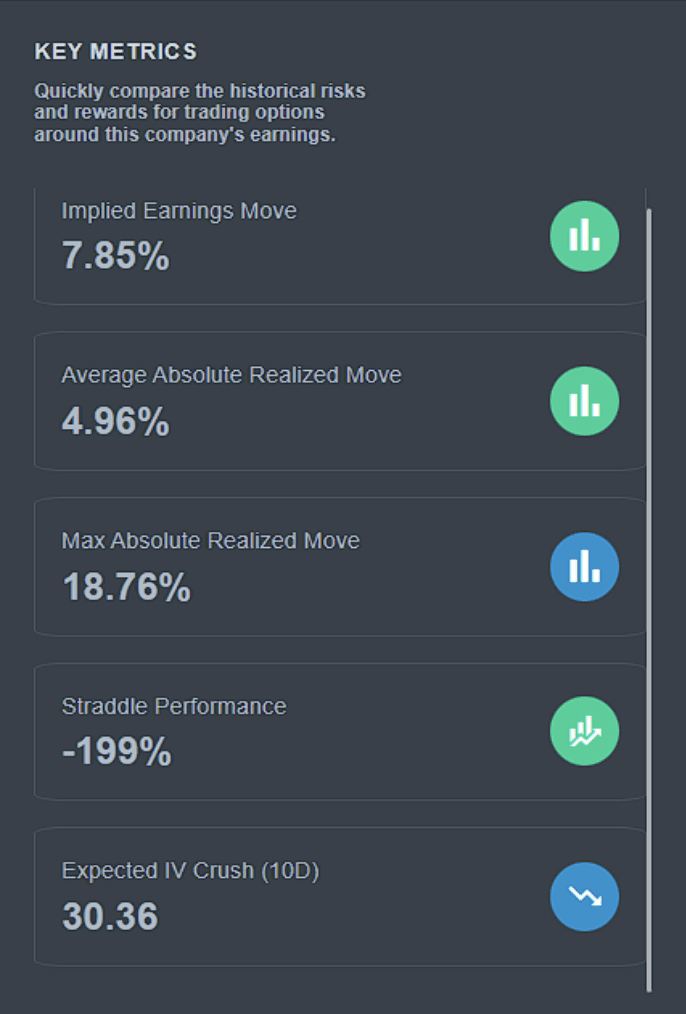
Earnings Trade Strategy For Nvidia
Depending on your risk tolerance and the expected outcome of the trade, there are a couple of methods you can use here. The first would be an Iron Condor which is a risk-defined, directionally neutral strategy. The goal is to collect a premium upon entering the trade while believing that Nvidia will not move past the 7.85% implied move.
The other strategy to use would be a calendar spread which is also a risk-defined, directionally neutral strategy. The trade is entered with a net debit but carries a higher payout than the iron condor strategy. We will analyze each method below. As always, options are risky and you can lose 100% of your initial investment.
Nvidia Earnings Backtested
The data and charts presented are from the last 4 years of Nvidia earnings results. As you can see in the “moves” chart, which shows the earnings implied move over the last 4 years, we are at the higher end of the implied moves.
Also in the same picture, you can see that straddles consistently lose money. More notably, Nvidia is reporting Q3 earnings, in which the highest ever realized move during Q3 earnings results was 7.25%. Already the options market is overpricing Nvidia’s implied move.
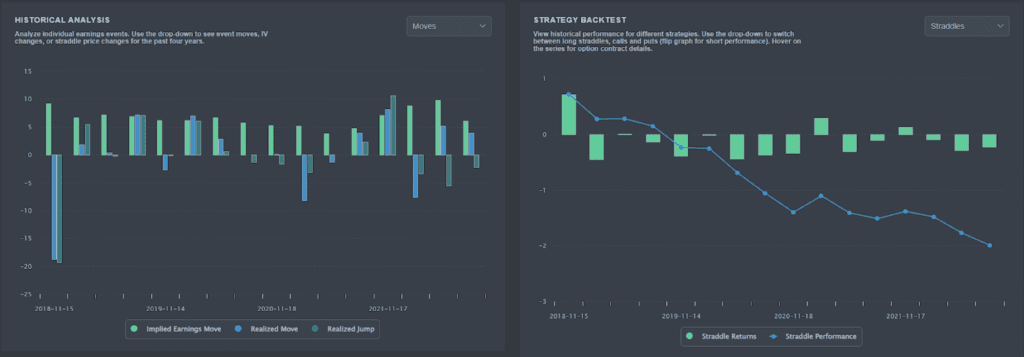
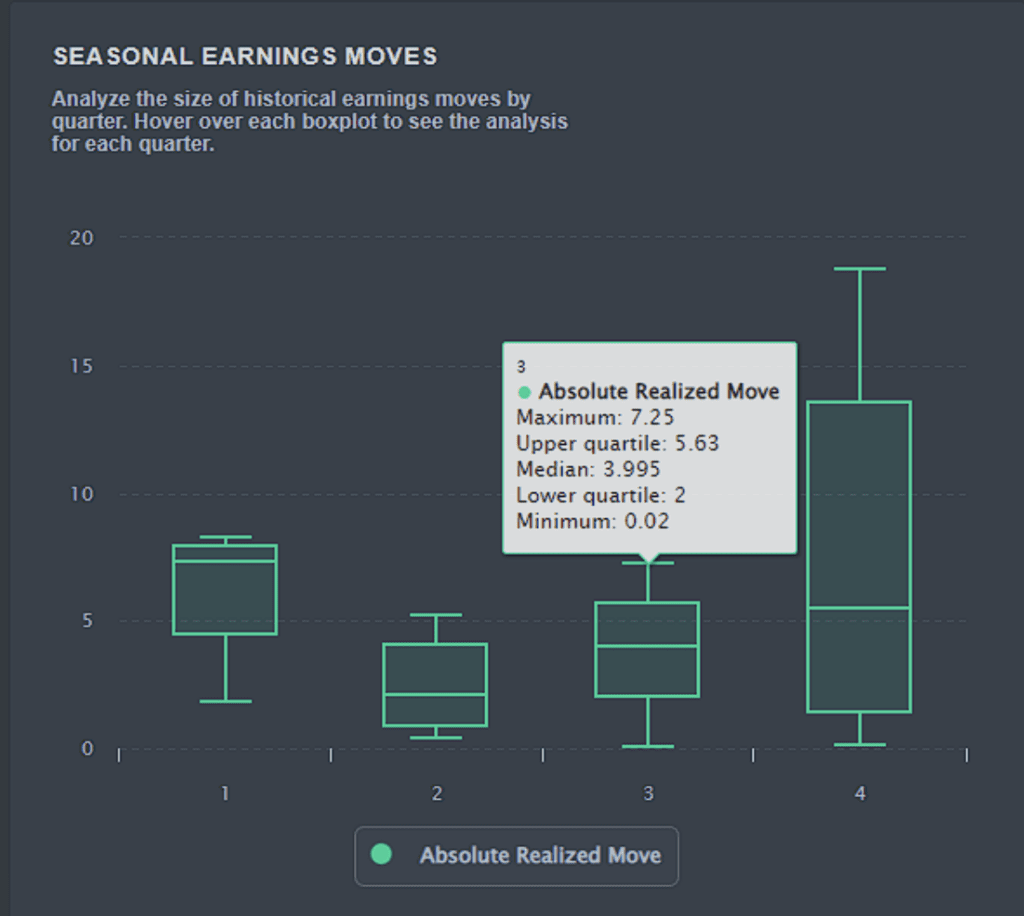
Most strategies used during earnings events involve the harvesting of premiums, so it is important to understand where implied volatility is currently (IV30), and where it was before and after the earnings. Only 1 time in the last 4 years did Nvidia experience a volatility expansion post-earnings announcement.
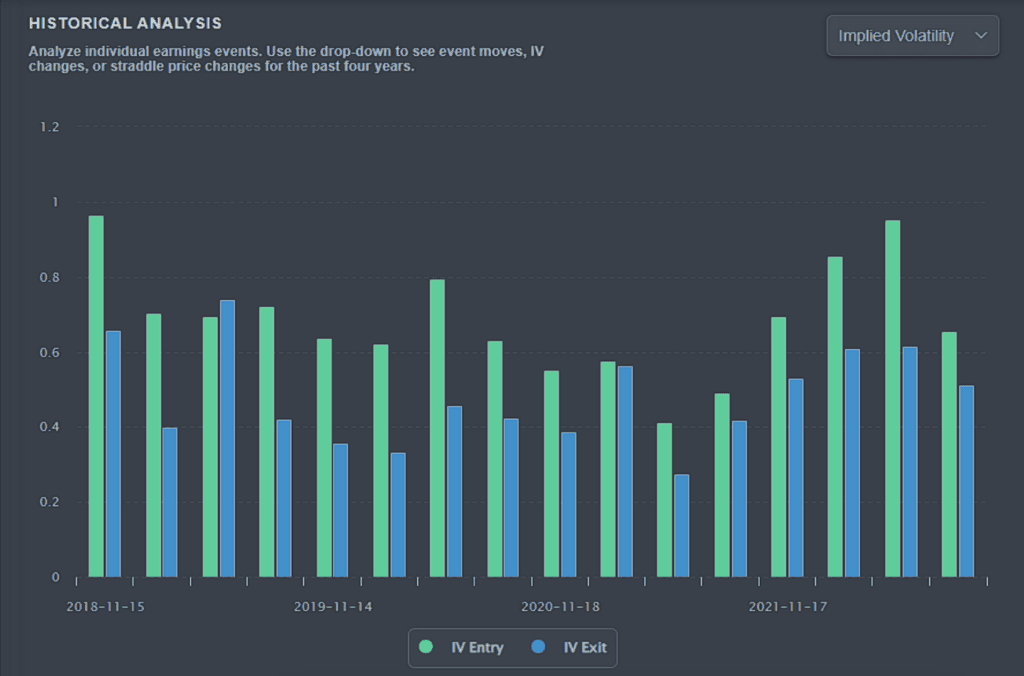
Iron Condor Analysis
With an Iron Condor, your expectations would be that Nvidia does not move past your short strikes. If that happens, losses or the need to roll will take place. As a reminder, your long strikes will allow exposure to gamma. If Nvidia stays within your short strikes then your maximum profit will be the premium received. For reference, $AMD was reported on November 1st, and the stock moved -1.8%. Let’s look at the volatility breakdown associated with an iron condor.
The two charts below are what’s known as the volatility cone and the term structure. Starting with the volatility cone, you have days till expiration on the X axis and implied volatility on the Y axis. This allows us to quickly get a sense of what might be expensive, long, or shorter-dated expirations.
As you can see, we are approaching the maximum volatility experienced for the 10DTE options. Next is the term structure, this shows us the event and non-event implied volatility across the options chain. Also visible is the risk premium between event and non-event implied volatility, illustrating a drop-off in the volatility post-earnings release.
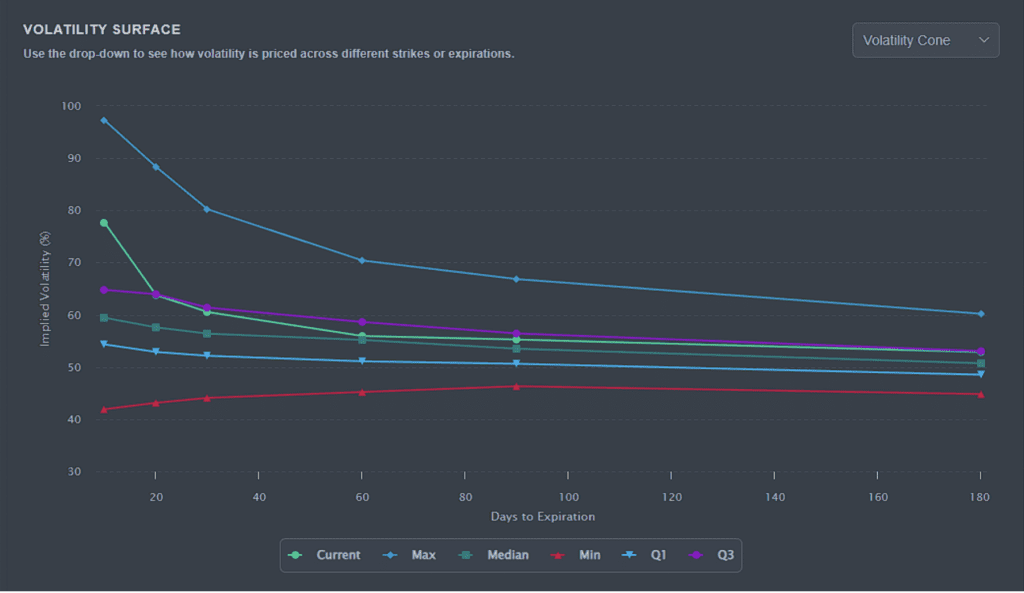
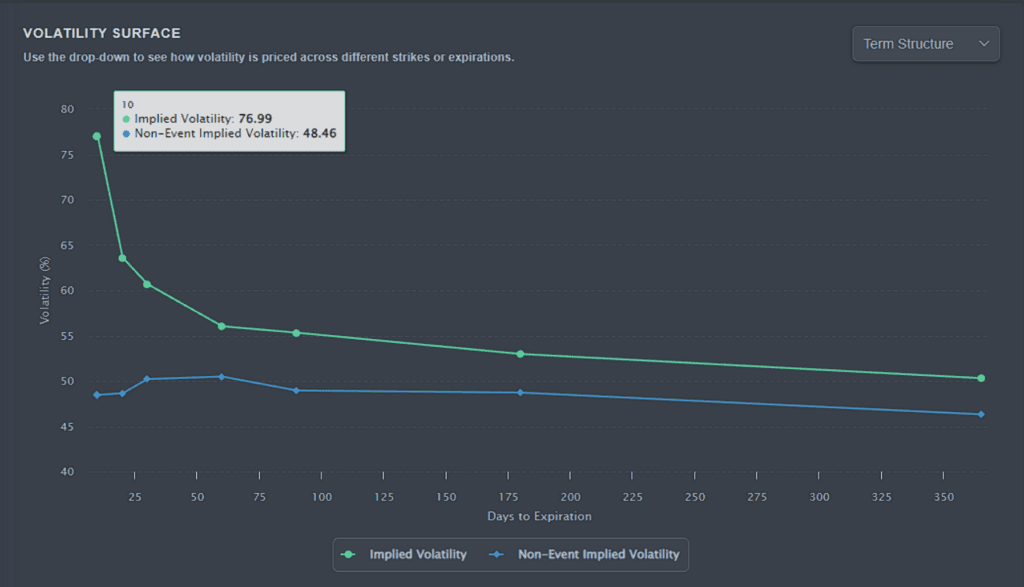
Calendar Spread Analysis
A calendar spread is also a risk-defined, directionally neutral strategy. It can also be structured with a bullish or bearish bias depending on the strikes chosen, but it’s best to leave them neutral. It profits from the passage of time (theta decay) on the front-month option and a volatility expansion (gamma) in the back-month option.
You enter the trade with a net debit instead of a credit, unlike the iron condor strategy. Calendar spreads are much better for margin requirements and efficiency than other earnings trade strategies. Calendar spreads have positive theta and positive vega.
Reviewing the term structure chart above, you will notice that the volatility drop-off is most significant in the 10-60DTE options while 60DTE+ options experience little volatility contraction.
The core metric behind a calendar spread is known as forward volatility. It allows you to understand where volatility goes between expirations. Below is a chart of IV30 and FWDVOL30/60. You will notice the large gap between the two, but they always reconnect. This is what we want to see for a successful calendar spread trade.
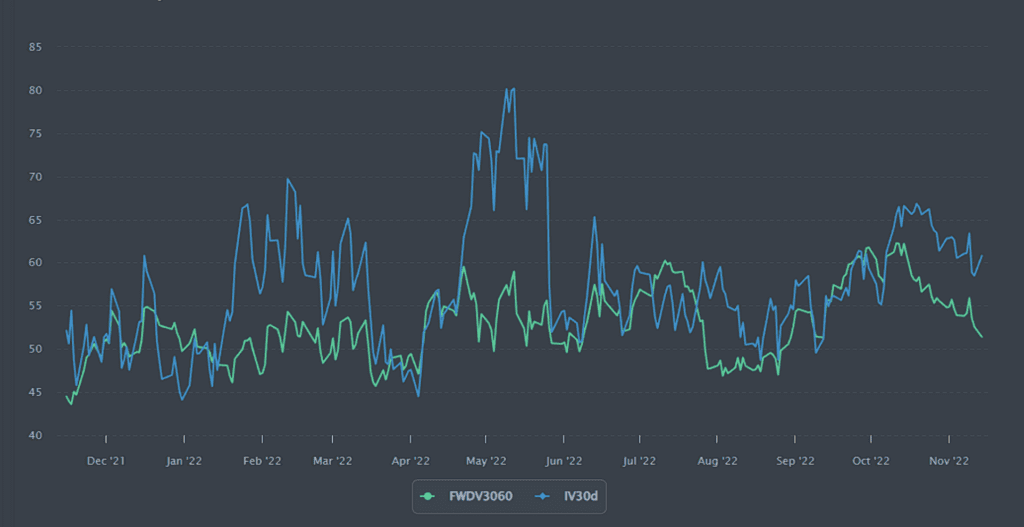
Furthermore, to understand if a calendar spread will be worthwhile for this trade, you will want to see backwardation in the term structure rather than contango. Below is the IV 30/60 slope, this illustrates that the further-dated options are indeed inexpensive in comparison to the near-dated options which are more expensive (backwardation).
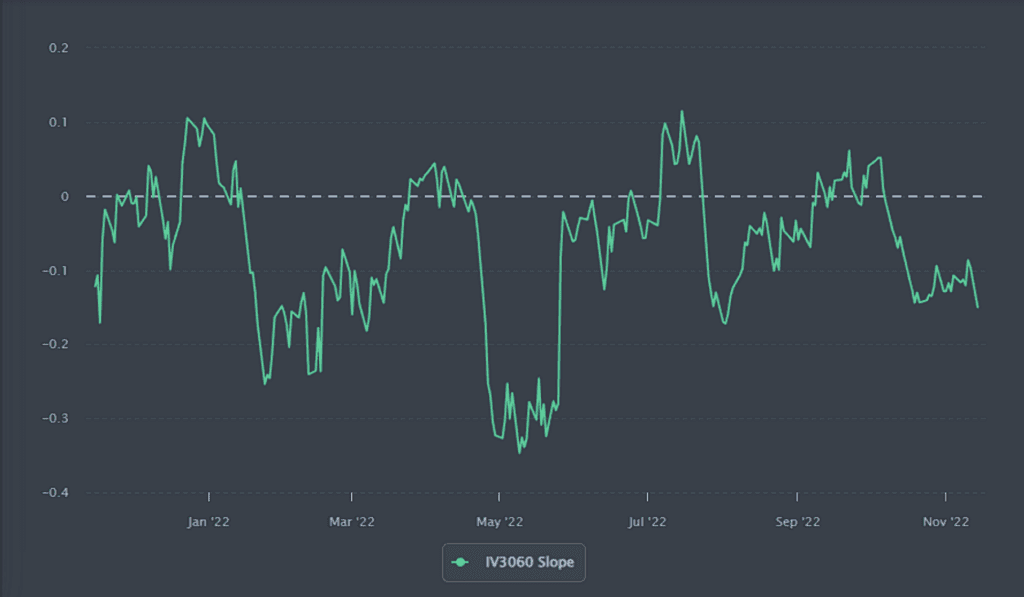
Nvidia Options Skew Analysis
The skew structure or “volatility smile” is one of the most important charts to analyze as this is the root of all options analysis. It shows the implied volatility across 30, 60, 90 day expirations on the option chain. This allows us to get a better understanding of the more likely outcome, and where the options market is pricing the risk to be.
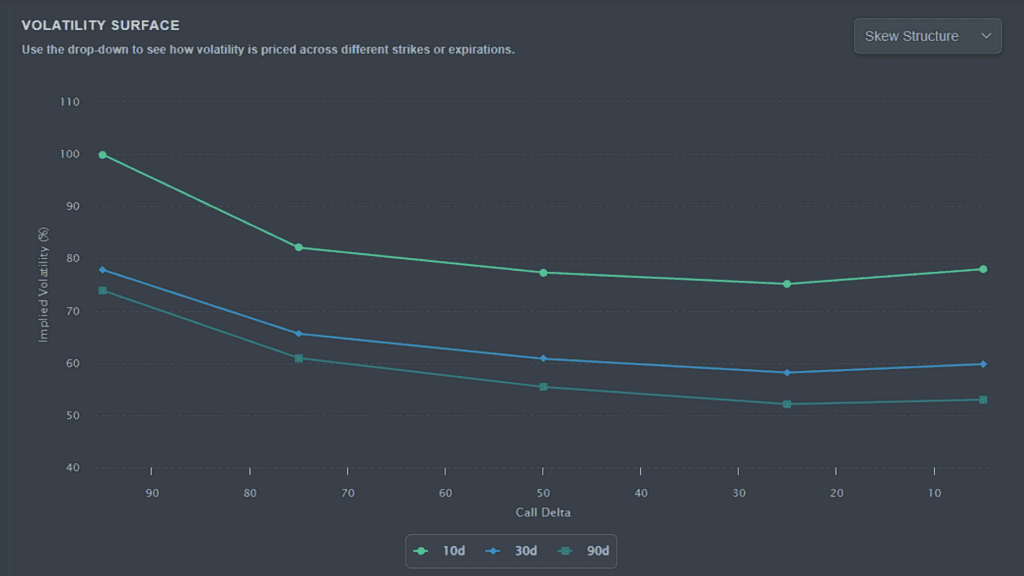
The call delta is on the x-axis and implied volatility is on the y-axis. For each expiration line, the left two dots are out of the money puts (90 call delta), the center dot is at the money (50 call delta), and the right two dots are out of the money calls (10 call delta). You can see that the out of the money calls are priced greater than at the money calls on the 10DTE. For comparison, you can review what happened in the last analysis with $AAPL and where the market was pricing the risk to be in that case.
With Nvidia, the majority of the risk is being priced to the downside and the out of the money call skew illustrates that the market has belief that the most likely move is to the upside, up to the 50 call delta. The takeaway here is that the market has not given a clear bias yet to the outcome of the earnings report.
Order Flow Analysis for Nvidia Earnings
With flow data, we can get an understanding of where larger market participants are placing themselves for the earnings announcement. Sorted by the largest premium since November 1st, we can see that there is some large call and put premium coming through.
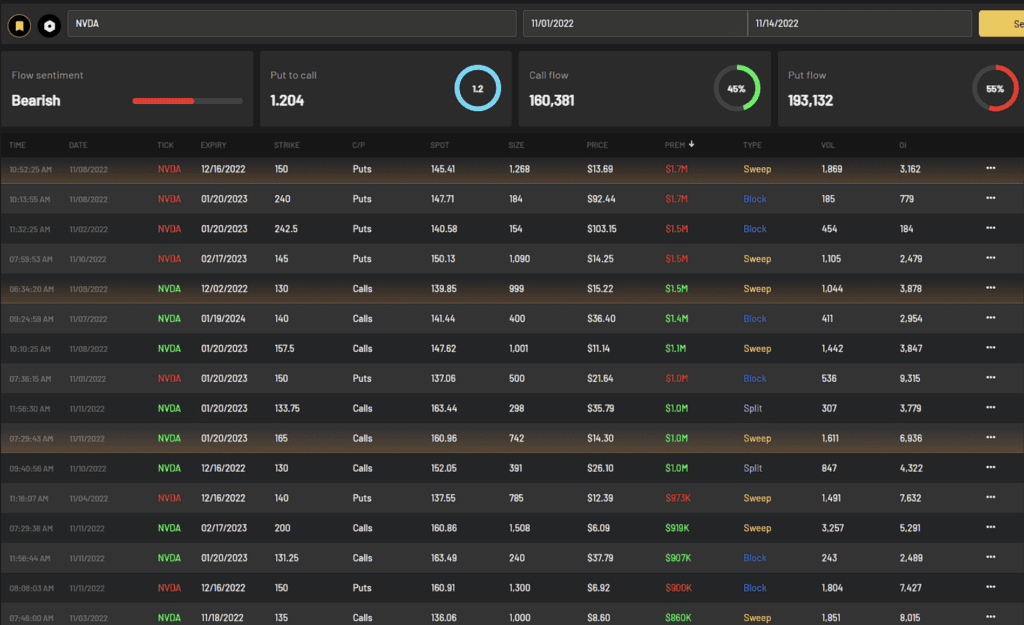
Dark Pool Data Insights For Nvidia Earnings
Dark pool level data can be used as support and resistance when doing technical analysis. It may help determine where potential breakout points might be. Viewing the largest prints since November 1st, this will paint a clear picture of where the largest market participants might be buying or selling Nvidia shares.
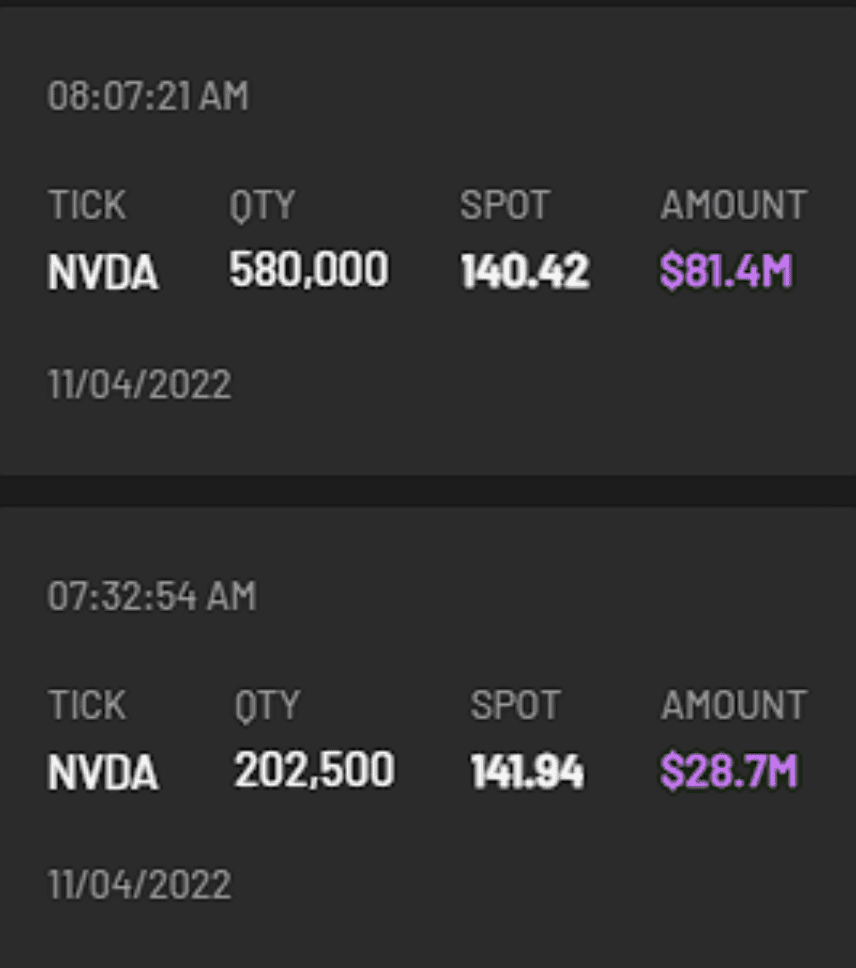

As we can see, the largest concentration of dark pool prints has been in the $140-$162 range. Nvidia’s share price over the last month has increased 40%, leading up to the earnings release. As noted above in the order flow, most of the large option strikes align with dark pool share price.
Closing Thoughts
All of the 31 Wall Street analysts who cover Nvidia earnings have given slower growth expectations for this quarter. Along with this, company executives have been on a selling spree since November 2020.
The extremely negative sentiment surrounding Nvidia’s earnings results will provide a catalyst for a large increase in share price shall Nvidia beat. If Nvidia comes in line with expectations we can possibly see a repeat of $AMD’s stock movement and have a lower but flattish move the following day. That would be the best possible scenario for our iron condor.
Given the already guided down revenue from Nvidia and Wall Street expecting lower results, shall Nvidia miss on earnings, the stock price will begin to give back a large portion of the month long rally. This upcoming earnings report will be very important for the future of not only Nvidia but for the broad indices.
Charts provided by PredictingAlpha. Disclaimer: Cheddar Flow is not a registered investment advisor nor is licensed as such with any federal or state regulatory agency. Cheddar Flow does not manage client assets in any way. Information provided and opinions expressed on this website do not constitute investment advise. The ideas expressed on this site and related services are solely the opinions of Cheddar Flow and are for educational purposes only. We advise everyone to know the risks involved with trading stocks and options. We encourage every visitor to the website to do his/her own research and to consult with his/her own financial advisor(s) prior to engaging in any investing activities, and to make sure he/she knows all the potential risks involved. Any investment decision that results in losses or gains made based on any information on this site or related services is not the responsibility of Cheddar Flow. Cheddar Flow is solely a data-provider and not a stock picks alert service.




